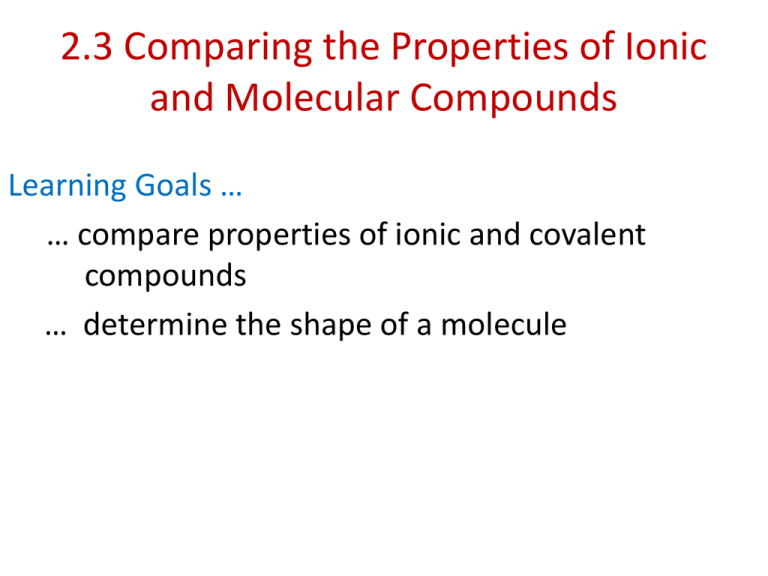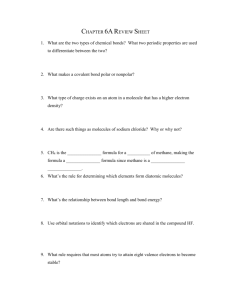Molecular Polarity - Chemistry at Loyola
advertisement

2.3 Comparing the Properties of Ionic and Molecular Compounds Learning Goals … … compare properties of ionic and covalent compounds … determine the shape of a molecule MELTING AND BOILING POINTS • the strength of the force between ions or molecules determines the melting point and boiling point of a compound • ionic compounds usually have HIGH melting points and boiling points • polar covalent compounds have intermediate m.p.’s and b.p.’s • non-polar molecules have the lowest m.p. and b.p SOLUBILITY • • • • water is a POLAR molecule “like disolves like” ionic and polar covalent compounds are soluble in water non-polar compounds are insoluble in water ELECTRICAL CONDUCTIVITY • ions must be free to move in order to conduct an electric current • only IONIC compounds in the liquid or aqueous state can conduct electricity Molecular Shapes Linear Tetrahedral Trigonal planar Bent Trigonal pyramidal Bent Predicting Molecular Shape a) BeF2 2 bond pairs 0 lone pairs LINEAR b) BCl3 3 bond pairs 0 lone pairs TRIGONAL PLANAR c) SiCl2 Si 2 bond pairs 1 lone pairs BENT d) CF4 4 bond pairs 0 lone pairs TETRAHEDRAL e) PF3 3 bond pairs 1 lone pairs TRIGONAL PYRAMIDAL f) H2O 2 bond pairs 2 lone pairs BENT Can I … … compare properties of ionic and covalent compounds … determine the shape of a molecule HOMEWORK WS “Properties of Ionic and Molecular Compounds” p 82 #4-6, 8, 11-13, 16






